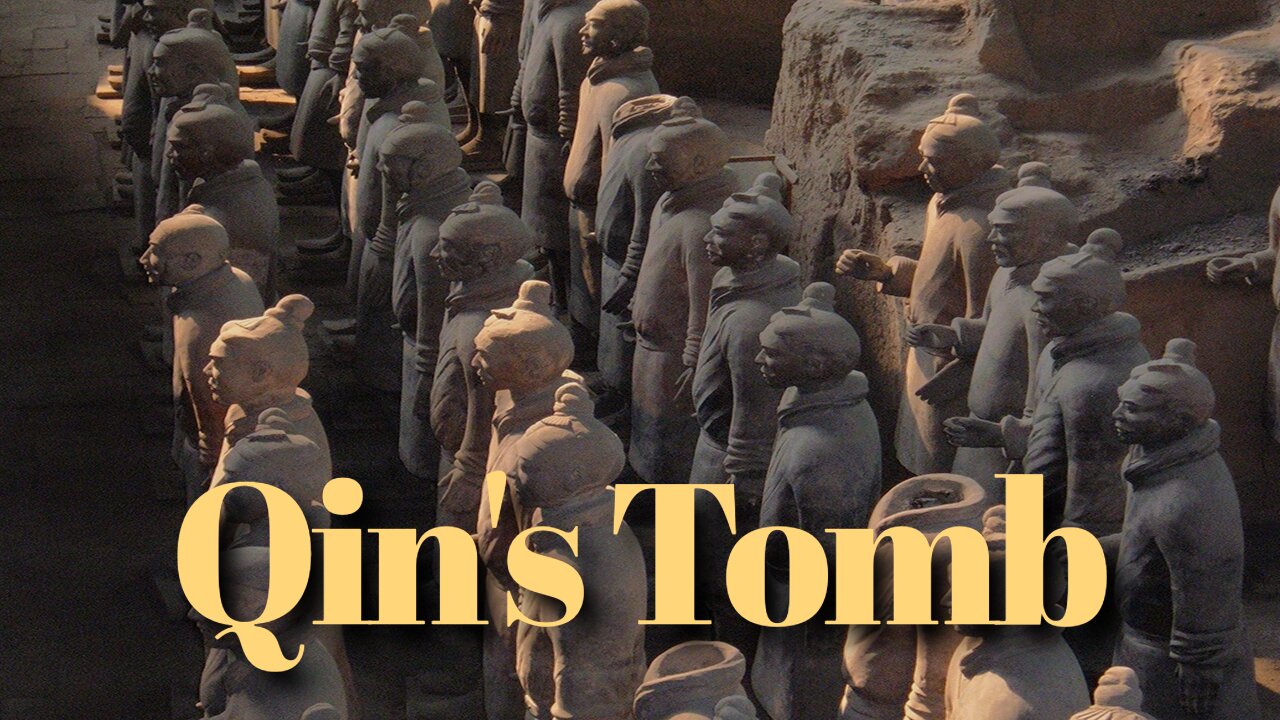Premium Only Content

The Eternal Emperor: Qin Shi Huang's Tomb and His Terracotta Army
Located in the Shaanxi province of China, The Tomb of Qin Shi Huang is a place shrouded in mystery, history, and wonder. It is here that the world-famous Terracotta Army was discovered, an archaeological marvel that has captured the imaginations of people worldwide.
This vast underground necropolis stands as a testament to the power and ambition of Qin Shi Huang, the first Emperor of China, and offers a window into the ancient world of China's imperial past.
To understand the significance of the Tomb of Qin Shi Huang, one must first grasp his remarkable life and achievements. Born as Ying Zheng in 259 BC, he ascended the throne of the Qin State at the tender age of 13.
With a visionary zeal, he sought to unify the various warring states of China under a single rule. After decades of warfare, Ying Zheng succeeded in this monumental task, proclaiming himself as Qin Shi Huang, the First First Sovereign Emperor, in 221 BC.
Qin Shi Huang's reign marked a pivotal point in Chinese history. He standardized currency, measurements, and writing systems, creating a cohesive nation-state.
He also wanted to control the country from one central place and stop powerful local rulers, and so broke down the walls that divided the different parts of China and had new walls built that connected the old ones along the northern border.
This was meant to protect China from the Xiongnu people in the north. The barriers were not intended to be permanent, but ultimately formed part of what became the Great Wall of China, which was expanded, repaired and maintained by subsequent dynasties.
From the moment he took the throne, Qin Shi Huang was preoccupied with immortality. It is said that he spent much of his rule searching for the Elixir of Life, believing it would grant him immortality, but these efforts were in vain.
Ultimately, the Emperor turned his attention to his own tomb, envisioning an underground palace that would rival the grandeur of his earthly empire. He spared no expense, conscripting hundreds of thousands of laborers to construct his mausoleum over the course of nearly four decades.
The most famous discovery within the Tomb of Qin Shi Huang is the Terracotta Army, a vast collection of life-sized statues meticulously crafted to accompany the Emperor in the afterlife. This astonishing find was made in 1974, when local farmers digging a well stumbled upon fragments of clay figures.
The Terracotta Army comprises thousands of statues, including infantry, cavalry, chariots, and officers, each possessing distinct facial features and expressions. These remarkable sculptures were created to serve and protect the Emperor in the next world, mirroring the military organization of his time.
The sheer scale of the Terracotta Army is staggering. It is estimated that over 8,000 soldiers, 130 chariots, and more than 500 horses have been discovered, with much of the site still left to be excavated. The figures are intricately detailed, with individualized clothing, hairstyles, and weapons.
The purpose of this massive clay army was to serve as an imperial guard and escort for Qin Shi Huang in the afterlife. This reflects the ancient Chinese belief in an afterlife similar to the earthly realm, where one's status and needs continued beyond death.
The meticulous construction of the Terracotta Army is a testament to the sophistication of Qin Dynasty craftsmanship. It also speaks to the autocratic nature of Qin Shi Huang's rule, as the monumental effort and resources devoted to his tomb reflect his absolute power.
The ongoing excavation of the Tomb of Qin Shi Huang has revealed numerous other fascinating finds and some say also includes a number of booby traps designed to protect the tomb.
The preservation of the Terracotta Army and the Tomb of Qin Shi Huang presents unique challenges. Exposure to air and moisture can cause rapid deterioration of the clay figures, leading to a loss of detail and color. To address this, extensive efforts have been made to protect and conserve these priceless artifacts.
In recent years, sophisticated techniques such as 3D scanning and digital reconstruction have been employed to document and study the figures. This not only helps preserve the original statues but also provides researchers with a valuable resource for further analysis and understanding of the Terracotta Army.
The discovery of the Terracotta Army has transformed the site into a major tourist attraction and a symbol of Chinese cultural heritage. Millions of visitors travel to witness this awe-inspiring archaeological marvel.
The Tomb of Qin Shi Huang and the Terracotta Army it houses stand as a testament to the grandeur and ambition of China's first Emperor.
Photo credits - Aaron Zhu, Deadkid dk, Gary Todd, Maros, Zossolino, Jiisi, BrokenSphere, 画中的日记, Siestecita, Francisco Diez, Jorge Láscar, Philg88, Ingo.staudacher @ wiki commons
Music theme - Trumpets in Your Ears by Wowa & Chris Rede @unminus.com
-
 2:02:11
2:02:11
Inverted World Live
9 hours agoGiant Underground Blob Moving Toward NY | Ep. 85
45.9K18 -
 2:46:21
2:46:21
TimcastIRL
8 hours agoTexas GOP Greenlights ARREST WARRANTS For Dems Who FLED State | Timcast IRL
242K88 -
 3:16:50
3:16:50
Laura Loomer
8 hours agoEP137: EXPOSED: How Tucker Carlson Became Hunter Biden's Wingman
71.7K80 -
 4:22:34
4:22:34
Akademiks
7 hours agoNicki Minaj vs Dez Bryant. Trump Calls out Charlamagne. Diddy Denied Bail Again! ICEMAN soon?
57.2K3 -
 3:16:28
3:16:28
Nerdrotic
9 hours ago $9.32 earnedNerdrotic at Night 504
82.9K3 -
 8:20:30
8:20:30
Dr Disrespect
17 hours ago🔴LIVE - DR DISRESPECT - WARZONE - RANDOMLY GENERATED LOADOUTS EVENT
232K9 -
 1:36:07
1:36:07
Glenn Greenwald
12 hours agoTrump Admin Unleashes More Policies That Prioritize Israel Over American Citizens; The Smear Campaign Against Gaza Aid Whistleblower with Journalist Mel Witte | SYSTEM UPDATE #497
146K192 -
 58:14
58:14
MattMorseTV
10 hours ago $14.81 earned🔴Hakeem just lost EVERYTHING.🔴
84.4K62 -
 9:21:36
9:21:36
Rallied
13 hours ago $3.19 earnedWARZONE CHALLENGES WITH DRDISRESPECT & BOB
86K5 -
 7:15:14
7:15:14
SpartakusLIVE
10 hours agoMonday MOTIVATION leaves viewers ENERGIZED and MAXIMIZED to conquer the week
39.2K1